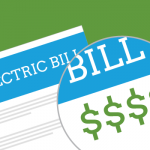LAHORE: High cost of electricity has almost reduced the electricity consumption by the cottage industry by half in last five years, as the usage of B1 connections (meant for cottage industry) has come down to 278 million units in 2018-19 against 578 million units in 2014-15.
The electricity cost has registered a rise of 62 percent during the last two years, a phenomenon that has hit hard the affordability of the industry, particularly the export-oriented units and eventually a slowdown in setting up of new industrial units in the country.
According to the data available with Business Recorder, the number of cottage industry units has come down to 98,128 million in 2018-19 against 107,050 million units in 2014-15. It may be noted that a unit of cottage industry consumes up to 25 Kilo Watt (KW) electricity on an average per month. Those consume above 25KV up to 500KW fall under the B2 category, which load has increased to 10,299 million units in 2018-19 against 7485 million units in 2014-15.
Similarly, the number of industrial units has also grown to 241,496 in 2018-19 from 205,141 units in 2014-15. Those industrial units consume from 501 KW to 5000KW electricity fall under B3 category and their consumption has increased to 10,022 million units in 2018-19 against 9087 million units in 2014-15 while the number of industrial units reached to 2723 units in 2018-19 against 2388 million units in 2014-15. Most of the industry falls in this category and there were only 80 industry units (with a total consumption of 3608 million units) in 2014-15 which were consuming above 5000KW (B4 category) and this number has reached to 89 with a total consumption of 3677 million units.
It is worth noting that both SDOs and Executive Engineers take readings of B2, B3 and B4 connections and record the load factor in order to examine the consumption. However, this practice has not been observed in letter and spirit nowadays.
The power sector experts have expressed their worry over a dismal growth of both the cottage industry and large scale manufacturing units like cement, chemical and fertilizer etc. in the country, saying that the affordability of electricity is a major cause of this situation. Also, they said the growth of the medium level industry is stagnant if one looks at the electricity consumption data over the last five years. It suggests that investors are shying away from investing in the country because of the high rate of taxes on the one hand and unaffordable electricity tariff on the other, they added.
It may be noted that Pakistan has shown improvement on ease of doing business index of the World Bank but still the investment scene is very gloomy, suggesting that Prime Minister Imran Khan’s vision of increasing employment opportunities would remain unfulfilled during 2020.
They said the electricity availability was also a big problem some five years back but it is also a fact that no one was denied electricity connection on this account during those difficult years. Further, they said there was an intentional effort to divert minimum load shedding even during that worst period when per unit cost was abnormally high.
They have urged the government to make electricity availability affordable on priority basis in case it is serious in ensuring rapid industrial growth.
It may be noted that the government had issued notification for providing electricity at 7 Cents (Rs7) per kWh on 1st January 2019 but it was burdened with Quarterly Tariff Adjustment and Annual Distribution Margin Charges with a total impact of Rs4.96 per kWh. Also, the industry is paying 17 percent General Sales Tax and 5 percent Income Tax on its bills but no refund since July 2019, which was promised to be processed within 72 hours under the FAST system.







